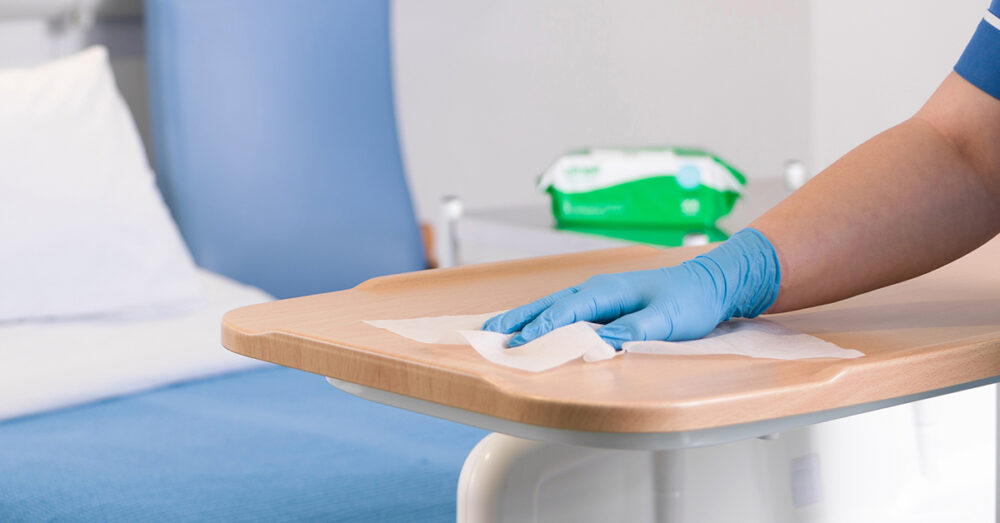Posts Tagged ‘Acinetobacter’
Update: Briefing on ESBLs, CPEs, & other antibiotic-resistant Gram-negative bacteria
We originally wrote this post in 2015 as a briefing on various antibiotic resistant bacteria. It’s one of the most popular articles on the blog, so time for an update! Read on to discover more about “antibiotic-resistant Gram-negative bacteria” and why resistant Enterobacterales are a real cause for concern. What are “antibiotic-resistant Gram-negative bacteria”? There…
Read MoreCDC issues updated antibiotic resistance threat report
As 2019 draws to a close, and we look to 2020, it’s interesting to see how the CDC assesses the risks associated with antibiotic resistance in their updated threat report. The report is well worth a read, providing an overview of the threat of antibiotic resistance, a discussion on the approaches to preventing the emergence and…
Read MoreWhy all-in-one detergent disinfectant wipes are faster, more effective and longer-lasting
An Italian study evaluated two different methods of environmental disinfection for high-touch surfaces contaminated with carbapenem-resistant Acinetobacter baumannii. The standard method was a two-step method involving cleaning followed by a disinfection step using a chlorine-based disinfectant. The new method was a one-step process using a pre-impregnated detergent/disinfectant wipes (Gama Universal wipes, as it happens!). The one-step process using…
Read MoreThe environment as a persistent and major reservoir for carbapenem-resistant Acinetobacter baumannii
A new Israeli study in a hospital with endemic issues due to carbapenem-resistant Acinetobacter baumannii reports high levels of environmental contamination that persisted despite several different approaches to cleaning and disinfection. This study highlights the risk of patient-to-patient spread of carbapenem-resistant A. baumannii associated with environmental contamination. The study was performed in a large hospital in Tel Aviv, Israel. The hospital…
Read MoreExtensive environmental contamination with carbapenem-resistant Acinetobacter baumannii
A study from Singapore has highlighted extensive environmental contamination with carbapenem-resistant Acinetobacter baumannii in the ICU. This reinforces the need for enhanced environmental measures to reduce the transmission of carbapenem-resistant Acinetobacter baumannii in the ICU setting. Carbapenem-resistant Acinetobacter baumannii is in many ways a scary organism: it’s highly resistant to antibiotics with few therapeutic options left in some cases, seems to spread readily…
Read MoreFurther evidence that UV room decontamination reduces transmission in hospitals
A study published in the Lancet Infectious Diseases provides further evidence that UV room decontamination reduces transmission in hospitals. The multicentre cluster-randomised study showed that introducing UV room decontamination for selected patient rooms resulted in a hospital-wide reduction in C. difficile and VRE acquisition compared with standard methods of decontamination. This is a companion article to the BETR-D study that was…
Read MoreWhat healthcare workers should know about environmental contamination
A useful summary of current evidence highlights what healthcare workers should know about environmental contamination in hospitals. Whilst the focus of the article in the ICU, the principles are the same for healthcare workers in other settings too. Bacteria contaminate the inanimate environment; this contributes to patient acquisition of pathogens; biofilms play an important but uncertain role;…
Read MoreMore single rooms = less MDR Gram-negatives in the ICU
An 11 year Dutch study provides compelling evidence that a move to single rooms from multi-occupancy bays dramatically reduced the burden of multidrug-resistant (MDR) Gram-negative bacteria in the ICU. The study was centred in a 16 bed ICU in The Netherlands. From 2002-2009, the ICU was composed of a mixture of multi-occupancy bays and single rooms. Then,…
Read MoreQuats vs. hydrogen peroxide vs. VRE
A Dutch laboratory evaluation of four different disinfectant applied by either spraying or wiping has found that most are effective against key hospital pathogens. However, the hydrogen peroxide spray was ineffective against VRE, suggesting a problem with hydrogen peroxide stability. The study tested the ability of a hydrogen peroxide solution (branded a sporicidal), QAC, alcohol, and glucoprotamin…
Read MoreHow much of a problem is Acinetobacter air contamination?
We have known for a while that Acinetobacter baumannii can cause widespread contamination of surfaces and air. But it’s difficult to know how much of a transmission risk this causes. Is contamination of surfaces a cause or effect of transmission? And is contamination of the air an intermediate step between the patient and the surface, or a problem…
Read More












